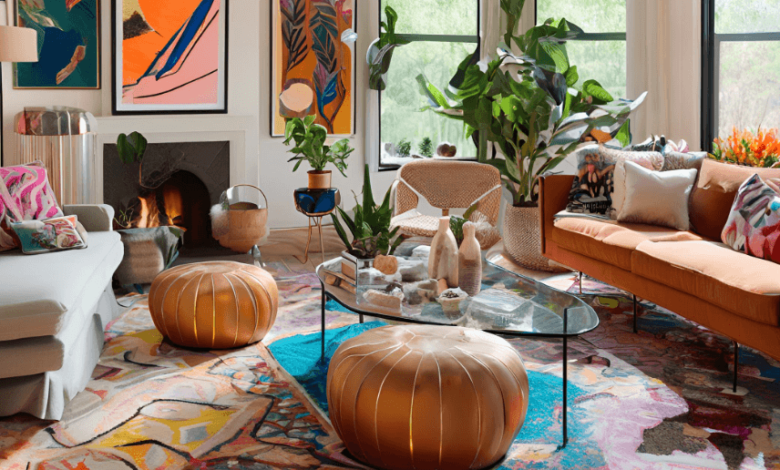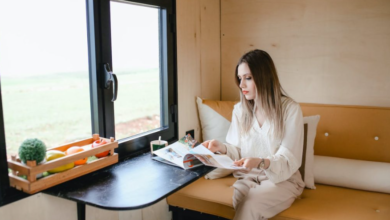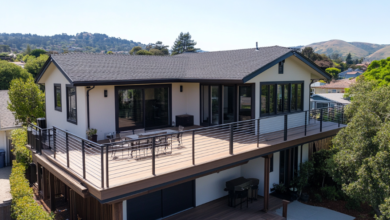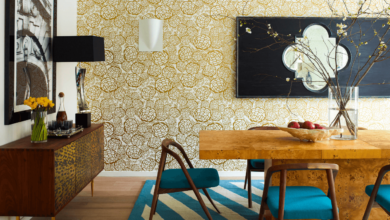The Art of Curated Chaos: Why Perfectly Imperfect Contemporary Home Decor Is Taking Over

Forget everything you think you know about contemporary home decor. The sterile, museum-like spaces that once dominated design magazines are giving way to something far more intriguing: homes that breathe, live, and tell stories. This isn’t about throwing design rules out the window, it’s about understanding them so well that you can bend them to create spaces that feel authentically yours.
The Psychology Behind Modern Living Spaces
Our homes have become more than shelters; they’re extensions of our personalities and sanctuaries for our mental health. Contemporary home decor has evolved to reflect this deeper understanding of how spaces affect our well-being. The rigid minimalism of the past decade is softening into something more nuanced, spaces that are clean yet warm, organized yet lived-in.
Research shows that environments with varied textures, strategic color placement, and personal elements reduce stress and increase creativity. This scientific backing has permitted designers to embrace what feels good rather than what simply looks good. The result is contemporary home decor that prioritizes emotional connection over aesthetic perfection.
Consider the rise of “dopamine decor”, spaces designed to trigger joy through unexpected color combinations, playful patterns, and objects that spark genuine happiness. This isn’t about following trends; it’s about creating environments that support your authentic self.
Texture as the New Color
While color psychology dominated interior design conversations for years, texture has emerged as the secret weapon of sophisticated contemporary home decor. The interplay between smooth and rough, soft and hard, matte and glossy creates visual and tactile interest that pure color cannot achieve alone.
Think beyond throw pillows and area rugs. Modern designers are incorporating texture through architectural elements like exposed brick walls paired with polished concrete floors, or smooth marble countertops contrasted with rough-hewn wooden beams. These combinations create depth and complexity that photographs beautifully while feeling incredible to experience in person.
The magic happens in unexpected juxtapositions. A sleek leather sofa becomes more inviting when surrounded by nubby wool throws and silk cushions. Glass coffee tables gain warmth when topped with carved wooden bowls and handwoven baskets. This layering technique transforms clinical spaces into havens that invite touch and exploration.
See also: Top Benefits of Buying Wholesale LED Strip Lights for Business and Home Use
The Rise of Mindful Maximalism
After years of “less is more,” contemporary home decor is embracing a new philosophy: “More is more, but only if it means something.” This isn’t about cluttering spaces with random objects, it’s about curating collections that reflect your life, interests, and relationships.
Maximalist contemporary spaces succeed through intentional editing and thoughtful arrangement. Every piece serves a purpose, whether functional, emotional, or aesthetic. Plants aren’t just air purifiers; they’re living sculptures that change with seasons and growth, adding warmth and liveliness to the room.
The key lies in creating a visual breathing room even within abundance. This might mean clustering similar objects together to create impact while leaving other areas deliberately sparse. Or using repetition of materials or colors to create cohesion among diverse elements. The goal is richness without chaos and abundance without overwhelm.
Technology Integration Without the Sci-Fi Aesthetic
Smart homes no longer need to look like spaceship interiors. Contemporary home decor has mastered the art of hiding technology in plain sight while maintaining aesthetic integrity. Wireless charging stations disguised as decorative objects, voice assistants that blend seamlessly into existing decor, and lighting systems that adjust automatically without visible controls.
The most successful tech integration feels invisible. Picture frames that display rotating digital art, mirrors that provide weather updates, and coffee tables with built-in refrigeration are all designed to enhance daily life without dominating visual space. This approach requires collaboration between designers and technology specialists from the project’s inception rather than adding tech as an afterthought.
Sustainable Luxury Becomes Standard
Environmental consciousness has shifted from trend to expectation in contemporary home decor. However, sustainability no longer means sacrificing style or comfort. Luxury now includes the knowledge that your beautiful space isn’t contributing to environmental degradation.
Reclaimed materials add character while reducing environmental impact. Vintage and antique pieces provide unique focal points that mass-produced items cannot match. Local artisans create custom pieces that reflect regional character while supporting community economies. These choices create spaces with stories, depth, and moral integrity.
The Role of Professional Curation
While DIY culture celebrates personal creativity, the complexity of modern contemporary home decor often benefits from professional guidance. Luxe Decorum understands that great design isn’t about imposing a signature style but about translating your vision into reality through expert knowledge of materials, proportions, and spatial relationships.
Professional designers bring access to trade-only resources, an understanding of building codes and safety requirements, and the experience to avoid costly mistakes. They can push your comfort zone while respecting your boundaries, creating aspirational spaces.
Conclusion
Contemporary home decor has evolved beyond rigid rules and trending hashtags into something more profound: the art of creating spaces that support and celebrate human life in all its complexity. The best modern homes feel timeless and current, personal yet universally appealing, carefully planned yet effortlessly comfortable. This evolution represents our growing understanding that our environments shape our experiences, and those experiences, in turn, shape our lives.




